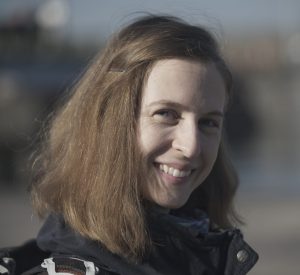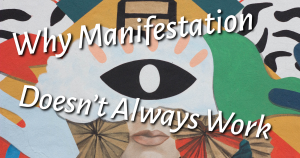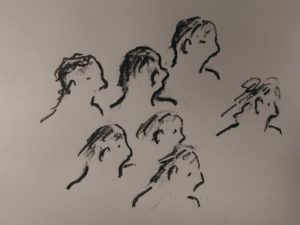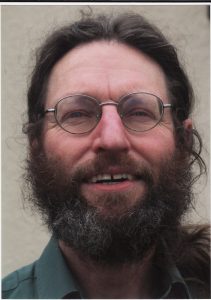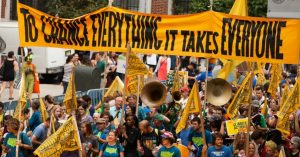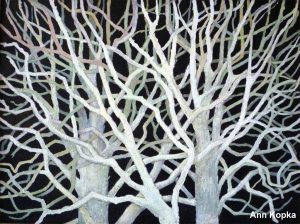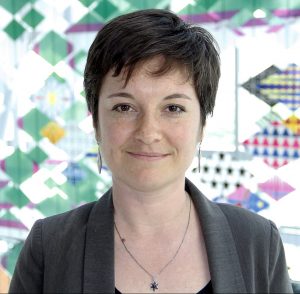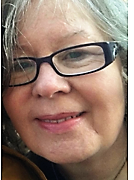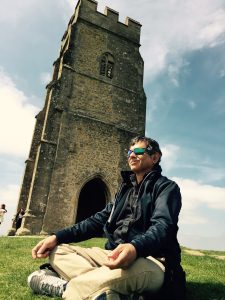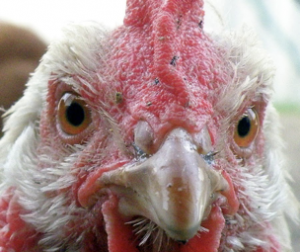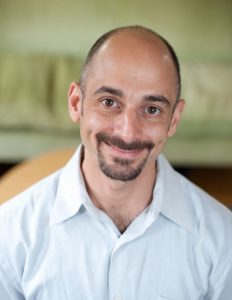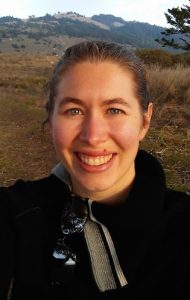Engaging the Inner Critic; Toward a Fluid Inner Ecology

by Rhea Shapiro
All of us with an abuse or trauma background, especially in early childhood, live with the remnants of these parts of our lives in different ways. A common result is an inner voice that is anything but kind or supportive. This voice echoes the tyrant or “ism” that we lived with and endured with no power to stop them. If we have survived into adulthood we have that tyrannical and critical voice inside us. It doesn’t stop. We have to work it. We have to work against it and with it.
This is a mythic challenge represented by the “wrathful deity” of Tibetan Buddhism. We can learn to interact, wrestle, kill, re-educate, change and finally even love this inner part of ourselves. I recall Pogo, the comic strip character’s famous quip: “ I have met the enemy and it is me!” which is completely applicable here.

Hayagriva is a fierce emanation of Amitabha (infinite light) Buddha, from the Tibetan Buddhist tradition.
How do we notice, work with, and transform these voices, including the habits and repeating loops we develop? After all, these critics usually have all the secondary powers our primary identities are searching for.
The process of creating a more fluid inner ecology takes time; working back and forth, up and down, in and out, repeating, forgetting, re-repeating and slowly our inner atmospheres can shift.
Noticing Comes First
For many, this voice actually hides in its everyday form. We are so used to an inner climate of negativity that we don’t question it. We are hypnotized by the normality in our inner world; not expecting to do well or to be liked or loved; actually expecting to fail or be rejected; never doing well enough to satisfy this voice.
Where once this voice might have kept us safe from an abusive adult that frightened or negated us – we learned not to speak out, disagree or rock the boat – now it is just this old familiar loop that no longer serves us. It keeps us from actualizing our full potentials and enjoying a life that a human being is meant to live.
Pulling back our projections is also noticing. A good rule of thumb (because we internalize oppression); if it is happening outside, it is also happening inside.
Creating Relationship: Wrestling
The inner critic usually operates in the inner auditory channel, through our often unconscious ideas and thoughts about ourselves. Creating a new relationship with this inner role means engaging this voice and practicing inner relationship work. This includes standing up, fighting with that critic and recruiting allies, real and imagined. We use our creativity and all perceptual channels here: movement, sound, language, art and feelings – both body and emotion – as we create a more fluid relationship with this spirit.
These critical voices are not used to being challenged and can be quite rigid and mean. Up to this point, it has been top dog in an open field with little resistance. Keep going.
The critic is an inner role that can shift. With time and work, you can create a new relationship with it, and a more fluid and sustainable atmosphere inside yourself. Remember, as a 4 year old once announced to me: “I am the boss of myself!”
Going Deeper
After challenging – and challenging and challenging – the inner critic, we can begin to dialogue with it. We find out what exactly it is saying, thinking and feeling. Critics are often too general, and when really challenged they get to the edge of their known world.
Working at that edge to create more specificity brings change, and power can shift. To do this one must learn to really enter the critic’s role and walk in their shoes. This is phase three of Arnold Mindell’s Four Phases of Conflict.
We are working to embody the energy of the critic, not the Consensus Reality figure from our past. We explore the characteristics of the critic as a path to that energy.
Re-educating the Critic
As we begin to allow ourselves to embody the outer aspects of the critic, – masks and theater are helpful here – we may get to know the stories and feelings behind its meanness and small mindedness.
Critics hold our suffering in a different way than our primary identities, which usually identify as victims of the abuse. Inner critics have internalized the power of the abuser.
Just as the victim can practice fluidity and begin to more consciously use the power of the abuser, so can the inner critic shift, develop and change. This fluidity needs to be imagined as a possibility. Then, in fits and starts, it can be introduced into the inner relationship between the victim and critic. This is a good example of a “Path Made by Walking”, which is also the title of a great introductory book about Processwork, by Julie Diamond and Lee Spark Jones (now Caroline Jones).
As it says in the I-Ching; Perseverance Furthers!
You will be rewarded as this critical inner figure slowly develops into a critical awareness that works with you, supporting you to process your life experiences.
Practicing with the Essence Level
This is the inner elder who uses Big Mind and Great Compassion – phase four of conflict – to create more spaciousness and friendliness inside. Working with the essence level tunnels underneath the polarity created by the critic. There you find its essence, and you can use that to work with the critic itself.
There can be relief from the critic’s meanness when you dance the energies in the victim/critic polarity, and move into your nature spot and out into a universe dance. (See Arnold Mindell’s The Universe Dance.)
The World Channel
Work in the world helps to integrate our newfound powers, as we use our critical awareness to process world problems and energies.
We all have the power to shift and grow this inner figure and develop a more fluid inner ecology. May the force be with you! And may you realize this great journey to yourself.
By Rhea Shapiro, Dipl. PW
Rhea is a longtime processworker living in Portland, Oregon. Processing is her life’s continual joy and challenge. Rhea’s favorite quotes from Arny Mindell are; “Oh boy, we’re in a mess now!” and; “Each of us is a full-time group-process.” These quotes remind her to remember process when working with clients and herself. They bring an overall engagement, patience, compassion and even a sense of humor when working with so much life experience.
Image credit: Sergey Noskov, Fine Art America




